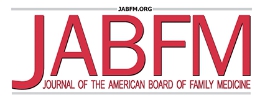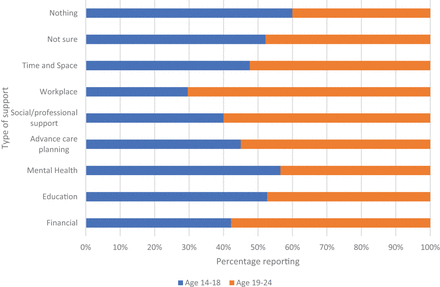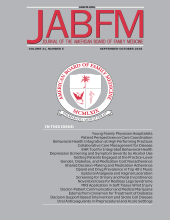Abstract
Background: Youth are increasingly upholding significant caregiving responsibilities. These caregiving responsibilities can have emotional, educational, and professional impacts on youth and young adults. And yet, policies and resources focus on adult caregivers and are limited in supporting young caregivers. The purpose of this study was to describe the different types of support that youth identify as being important to prepare to take care of an adult relative.
Methods: We conducted an open-ended, text-message based poll of youth ages 14 to 24 in August 2020. We conducted a content analysis to categorize and describe the different types of support respondents identified in their responses. We compared types of support identified by age-group, gender identity, and prior caregiving experience.
Results: Most respondents (42.2%) identified education (eg, skills training) as being an important resource. Other types of support reported included financial support (eg, assistive programs), workplace policies (eg, paid leave), mental health support, and professional support.
Discussion: Policy makers should extend existing policies (eg, Family and Medical Leave Act) to include and consider the circumstances of youth and young adults. Policies enabling young caregivers to actively participate in their adult relative's health care visits could be critical to preparing youth for the skills required and the physical and emotional demands associated with caregiving. Coordinated efforts between health and education systems could support youth in learning information about caregiving, medical decision making, and medical tasks.
- Adolescent
- Caregivers
- Clinical Decision-Making
- Delivery of Health Care
- Family Leave
- Health Policy
- Health Promotion
- Surveys and Questionnaires
- Workplace
- Young Adult
Introduction
Over one third of youth (age 14 to 24) provide previous or current caregiving support for tasks such as transportation, emotional support, monitoring safety, and dementia care, to an adult relative independently or with another relative and experience lasting impacts on physical and mental health outcomes, school performance, and employment.1⇓⇓⇓⇓⇓⇓⇓–9 However, the vast majority of clinical and/or community interventions focus solely on adult rather than young caregivers.10⇓⇓⇓⇓–15
State and national policies supporting young caregivers are even more sparse and often neglect their distinct circumstances.16 For instance, youth working while attending school may not benefit from the Family and Medical Leave Act (FMLA) since they are likely working too few hours to meet eligibility criteria.17⇓–19 Young caregivers are increasingly stepping into caregiving roles to accommodate gaps in needed supportive care to adult relatives as more adults are shouldering dual employment and caregiving responsibilities.20,21 But rather than having specific resources or policies for young caregivers, there is a reliance on resources for adult caregivers presumed relevant for young caregivers.22
Here, we present findings on the different types of support that youth identify and express as being important for preparing care for an adult relative to facilitate development of youth-informed caregiving policies and resources.18,23
Methods
Participants were recruited online to MyVoice, a national open-ended text message poll of youth ages 14 to 24 years, through social media advertising to meet national benchmarks based on weight samples of the American Community Survey. Participants are sent weekly surveys on relevant health topics via text-messaging given high mobile phone access in this age-group (over 70% by age 14).24,25 Here, we report findings from our use of the MyVoice poll to study caregiving specifically. Demographic information was collected at enrollment.26 This study was approved by the University of Michigan Institutional Review Board and was fielded in August 2020.
Open-ended questions were developed through an iterative process with survey, mixed methods, and caregiving experts, and youth. The study included 5 questions on caregiving experiences and perspectives (eg, impact of caregiving) and was introduced with a prompt: This week is about family caregiving (taking care of an adult relative).27 This report focuses on the question: What would help you prepare to take care of an adult relative in the future?
We conducted a content analysis to analyze respondents' descriptions, which were submitted in a narrative format. We first read through all responses and developed a preliminary codebook of identified resources. Then, 2 investigators refined codes, independently coded all responses using Microsoft Excel, and resolved discrepancies through discussions.28 We assessed the frequency with which respondents identified each type of support among the full sample, then among respondents with caregiving experience and by age-group; summarized demographic characteristics (age, sex, race/ethnicity, socioeconomic status, region of the country); and conducted χ2 tests to evaluate the relationship between age-group (14 to 18, 19 to 24) and identified supports. Caregiving experience was measured by asking whether respondents had ever taken care of an adult relative (described elsewhere) and was not explicitly defined in the survey, to solicit a range of caregiving experiences.1
Results
Of 1076 youth who received the question, we analyzed 905 complete responses (response rate = 84.1%). Nearly half (46.5%) self-identified as female and 51.6% were age 14 to 18 years. More than half of respondents (60%) had at least a high school degree (Table 1).
Characteristics of the Study Sample (n = 905)
Respondents described several different types of resources to prepare them for caregiving responsibilities. These included: education (42.2%; eg, informational videos, skills training from professionals); financial stability (26.3%; eg, savings, public assistance programs); workplace support (6.4%; eg, working from home, leave, or flexible work hours during demanding caregiving periods); social/professional support (15.6%; eg, hired workers or relatives to assist with caregiving), time and space (9.8%; eg, a large enough home), advance care planning (9.6%; ie, early conversations with their relative about needs and preferences), and mental health support (3.8%; eg, access to treatment, respite, and opportunities to mentally prepare for caregiving). Table 2 provides illustrative quotes of the different types of support.
Resources to Support Youth in Current or Future Caregiving Responsibilities Identified by Respondents Age 14-24 (n = 905)
The majority of respondents identifying financial support were female (52.5%) and in the 19 to 24 age-group (54.6%, Figure 2). Respondents age 19 to 24 years were significantly more likely than respondents age 14 to 18 to identify workplace policies, X2, (2, n = 905)=23.7, P < .001 and social/professional support, X2, (2, n = 905)=10.6, P = .001. Respondents ages 14 to 18 were significantly more likely to identify education than those ages 19 to 24, X2, (2, n = 905)=5.2, P < .05 (Figure 1).
Types of support identified by youth, by age (n = 905).
Among 349 respondents with complete responses about current or prior caregiving experience who also discussed types of support (38.6%), education was the most commonly reported type of support (42.9%) followed by financial support (23.7%; Figure 2).
Types of support reported by youth with caregiving experience (n = 349).
Types of support reported by youth with caregiving experience, by age-group (n = 349).
Workplace support was the most common type of support indicated by experienced caregivers in the 19 to 24 age-group (70%) followed by social/professional support (60%) and financial support (58%). Among experienced caregivers in the 14 to 18 age-group, the most common response was that nothing can prepare one for caregiving (60%) followed by mental health support (57%) and education (53%; Figure 3).
Discussion
In this study, youth identified several types of support to prepare them for caregiving: education, financial support, workplace policies, social/professional support, mental health support, advance care planning, and time and space. Approximately 7% of respondents described a lack of clarity around what can help them prepare to be a caregiver; some also acknowledged—or resigned—that nothing can prepare one for caregiving. Respondents evenly endorsed the types of resources identified regardless of age, though respondents identifying workplace policies as a resource were predominantly age 19 to 24, perhaps reflective of their experiences in the transition from education to work environments, while respondents in the 14 to 18 age-group were focused on education and mental health.
Moving forward on types of support identified by respondents requires coordinated efforts between policy makers, clinicians, and educators. Lack of clarity around what can help prepare for caregiving was mostly due to a lack of exposure or perceived obstacles to caregiving, and may represent a need for conversations from health, educational, and social support systems that support youth for potential caregiving responsibilities. Future research should continue soliciting insights from youth to ensure that our policy investments are meaningful for youth now and as they transition to adulthood, and are responsive to the needs they identify from their caregiving experiences alongside their developmental and educational circumstances.
Coordination between health, education systems at multiple levels, and local government or community organizations could facilitate identifying caregivers (eg, through surveys) and the development and dissemination of support programs, educational guidebooks, videos, and workshops to help youth learn to perform various medical tasks (eg, wound care, medication management) and to learn broadly about caregiving responsibilities and self-care. These materials could be developed by caregivers, care receivers, researchers, caregiving organizations (eg, the National Alliance for Caregiving), and health care systems as part of their community outreach programs. These materials could be disseminated in school health classes, advising, or counseling centers, and doctor offices. Policies enabling youth to participate in health care visits could also be critical to their obtaining important information about caregiving, making medical decisions, and managing their mental and emotional health. While involving youth in medical information and decision making could be beyond their developmental readiness, engaging them incrementally could ease the burden associated with the steep learning curve and intense pressure of making sudden medical decisions for a relative without preparation.29 Meanwhile, some opportunities for minimizing this burden include screening for caregiving and increasing access to remote mental health support services and support groups.30,31 Screening, for example, could be implemented in the near future through conversations and in the longer-term could be integrated into patient questionnaires or the patient portal. Efforts to foster early engagement in their own health care, particularly during care transitions, could be critical to youth wellbeing.32
Policy makers should update FMLA and other workplace policies and financial supports to include the circumstances of young caregivers including in state FMLA expansions that offer paid leave.19 Data from adults 18 and older suggest that FMLA minimum hours and tenure requirements disproportionately exclude workers who are women, Black, Indigenous, and multiracial.16,33,34 In fact, the policy also excludes consideration of young caregivers who may be financially responsible for their adult relatives through jobs with lower hours alongside educational responsibilities. These caregivers could benefit from the job security offered by FMLA so they can return after their caregiving responsibilities. Investing in the wellbeing of young caregivers early on could be critical to preventing health disparities and inequities stemming from socio-structural barriers, later in life.35 Although respondents age 19 to 24 were more likely to describe a need for workplace support, extending policies to support those who are younger could be beneficial, particularly given recent state level initiatives to draw on youth to address the labor shortage.36
Future research should solicit more information about respondents' caregiving experiences, to examine relationships between the types of support identified and the nature of respondents' caregiving experiences. Our study is limited in inferences about caregiving support needs among racial/ethnic minority youth. For instance, youth identifying with communities where mental health disorders are stigmatized may not have identified mental health support.37 These perspectives should be examined further to ensure the development of policies and other resources that are responsive to the needs of diverse youth.23
Given the increasing role of family caregivers in supporting the needs of adults who may be aging or affected by chronic or acute health conditions including COVID-19, policies and programs should develop or extend existing policies to specifically meet the needs of youth who may be current or future caregivers. Supporting youth early on is an investment toward promoting caregivers' health later in life. Using youth-informed approaches is critical to developing relevant and effective policies and resources in the evolving area of caregiving.
Acknowledgments
The authors thank the MyVoice team for their assistance with developing questions and data collection. We are also grateful to Eve Rubovits for her assistance with developing figures.
Notes
This article was externally peer reviewed.
Conflicting interests: None.
Funding: This work was supported by the Department of Kinesiology and Community Health at the University of Illinois Urbana-Champaign (MR), the Michigan Institute for Clinical and Health Research and the University of Michigan Department of Family Medicine (TC), and a predoctoral fellowship from the National Human Genome Research Institute (T32 HG010030) (SJF).
To see this article online, please go to: http://jabfm.org/content/35/4/814.full.
- Received for publication December 31, 2021.
- Revision received March 4, 2022.
- Accepted for publication March 8, 2022.









